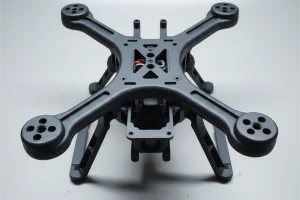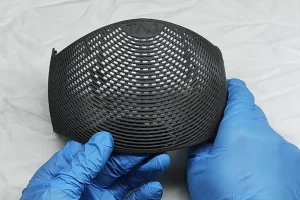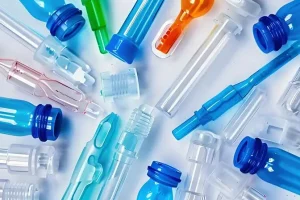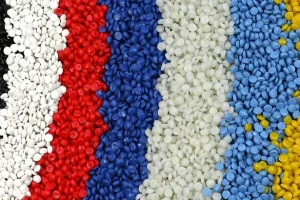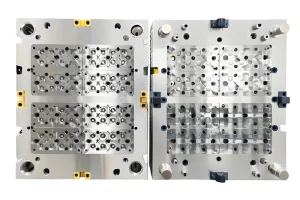Introduction
Automated and injection molding automation refers to the utilization of automated machinery and robotic systems in manufacturing settings to carry out injection molding processes. By incorporating plastic injection molding automation technology into this step-by-step operation, numerous benefits can be realized such as increased efficiency, consistent quality, lower overall project costs, reduced labor costs, and decreased waste generation.
This article seeks to investigate the advantages of using automated processes in injection molding and how technology is playing an increasingly significant role in this sector. We’ll cover topics such as centralized control systems, interconnected automated systems, and robotic systems in greater depth so readers can gain a better understanding of how using automated processes in injection molding can improve production efficiency and lower manufacturing costs .

II.Advantages of Automation in Plastic Injection Molding
Automated injection molding offers many advantages over traditional manufacturing methods. Here are some of the key, what are benefits of automated injection molding:
Improved Efficiency and Productivity:
Automated injection molding processes operate at high speeds, enabling the production of many parts in a short amount of time. Automated machinery and robotic systems can perform complex tasks with great precision, leading to increased output and faster time-to-market.

Consistent Quality and Reduced Errors:
Automated injection molding processes offer highly precise precision, guaranteeing that each newly molded part meets the same high standard as its predecessor. Furthermore, automation technology reduces both human error and errors such as dimensional issues or shot material discrepancies.
Lower Labor Costs and Improved Safety:
Automated injection molding reduces the need for human interaction, leading to lower labor costs and a safer working environment. By using automated tools and smart systems, more work can be done with less waste and fewer personnel hours, thus cutting back on overall labor hours needed for the manufacturing process.
Reduced Waste and Environmental Impact:
Automated injection molding equipment can minimize waste by using only the precise amount of material necessary for each newly molded part, thus cutting down on material waste and manufacturing costs. Furthermore, injection molding automation technology reduces the environmental impact of the injection molding process by minimizing energy consumption and greenhouse gas emissions.

Overall, automated injection molding offers numerous advantages that translate to a more efficient and cost-effective manufacturing process.
III.Role of Automation in Injection Molding
Automation technology is becoming an integral part of the plastic injection molding industry. Here are some ways plastic injection molding automation is revolutionizing this sector:
Automation in the Injection Molding Process: Automated injection molding processes can be employed for a variety of applications, such as the direct molding process and insert molding. Automation technology gives precise control of each stage in the direct molding process by stage, guaranteeing each newly molded part has the same high quality as its predecessor. Furthermore, automation can be applied to secondary operations like further processing or visual inspection.
Centralized control system and interconnected automated systems: Utilizing centralized control system systems and interconnected automated systems allow for seamless coordination between different automated tools, machines, and robotic systems, enabling the production of complex parts as well as performing intricate tasks, like assembling multiple pieces into an end product.
Automated machinery and robotic systems: Automated machinery and robotic systems can be utilized to carry out a variety of tasks, from loading materials to performing complex operations like insert molding. These machines work around the clock and perform and complete complex tasks by themselves, increasing production efficiency and output.
Secondary Processes and Operations: Automation can be employed for secondary processes like trimming, drilling, and further processing. Automated systems also perform quality assurance checks to guarantee each newly molded part meets the required specifications.
Experienced professional plastic molder and automation technology: Experienced professional plastic molders are essential in the injection molding process, and using automation tools and technology can enhance their skillset and expertise. By incorporating more automation tools into the production cycle, molders can focus on more complex tasks such as designing molds while automated systems take care of routine operations.

Automation in injection molding projects helps manufacturers increase production efficiency, cut costs and enhance quality control. Automated machinery and robotic systems combined with secondary processes and operations enable manufacturers to produce higher volumes of parts with greater precision and consistency. By working alongside experienced professional plastic molders, automation technology can enable manufacturers to reach these high levels of quality and efficiency in their injection molding projects.
Conclusion
Automated injection molding equipment is revolutionizing the manufacturing industry, offering numerous advantages. By integrating automation technology into their injection molding processes, companies can achieve improved efficiency, consistent quality, reduced labor costs per unit of production, and decreased waste generation.
Automation in plastic injection molding often entails the use of automated machinery and robotic systems, secondary processes and operations of automated machines, and collaboration between experienced professional plastic molders and automation technology. Together these elements work to create a more efficient, cost-effective, high-quality manufacturing process.
Looking ahead, automation technology is expected to play an even larger role in the injection molding sector. As this technology develops, manufacturers in the injection molding sector can expect even more precise and complex processes that generate analytics for enhanced production and quality assurance.
In conclusion, automated injection molding technology offers manufacturers numerous benefits, such as increased production efficiency, lower costs of the production process, and superior products. With the rapid advancement of automation technology in this sector, it appears that this sector will continue to experience continued growth and innovation over the coming years.


